7 Questions About Designing A Sunlit Room, Answered
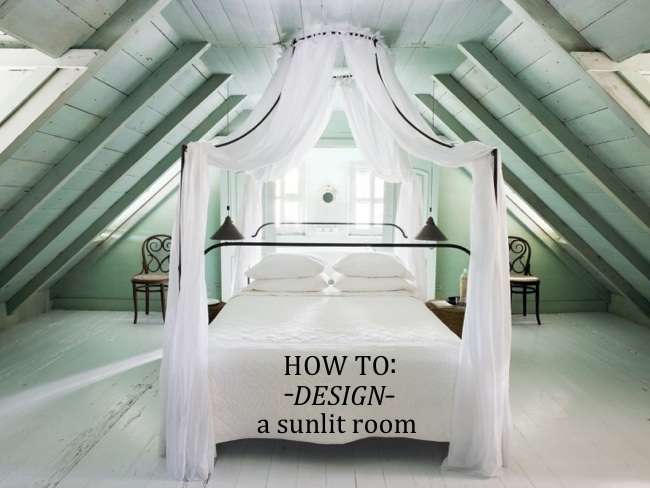
It has been a little over a year since we’ve moved in to our home on our capital outpost and I am slightly embarrassed, in part relieved to say that only just have we begun to place the finishing touches on our apartment. Unlike addresses before, in this particular home we have taken care not to rush any design decisions. Instead allowing for a lengthy introduction to a continually changing “lightscape” – as in the tropics one is required to hold a certain degree of respect for mother nature; for where she casts her light can determine the shelf life of a book. Pun intended. The same can be said for any prized possession: for wood soon looses its sheen and fabrics are quick to fade. This said, from one sunlight apartment to the next I’ve learnt some design tricks but before I share those I asked Island Connoisseur and owner of Seaglass Interiors, Jennifer Treco to answer 7 of my most pressing questions about designing a sunlit room.

To prevent books from fading what are you go-to tips and tricks?
Other than positioning bookshelves in an area out of direct sunlight, I recommend applying UV film to windows. The film, which doesn’t alter the appearance of the window, can block up to 99.9% of UV rays. However just make sure you apply it carefully so as to avoid it bubbling. Or you can always hire a professional. Also be careful of fluorescent bulbs as they emit UV rays as well, LEDs are a great alternative as they do not emit any UV rays.
Shades or curtains, which do you prefer?
Honestly, I like them all. If doing curtains with intentions of blocking out sunlight then be sure to have them lined with blackout material. Even the sheerest of fabrics can be custom made with this liner. Window shades made of a natural grass or bamboo come with this same feature and are more aesthetically pleasing than the typical vinyl roller blackout shades. Then of course there are plantation shutters, made of real wood or poly-vinyl, which can prevent light/heat from entering a room. With the simple tilt of the louvers you can control when and how much light you want in your space. If I had to choose a favourite window treatment that allows light in and also blocks out UV rays it would be Hunter Douglas Silhouettes. We’ve installed them in many of our clients’ home.
High quality vs. low quality paint, is one more fade resistant than the other?
One of the best ways to avoid fading paint is to invest in high-quality paint from the start. In my experience, color fade with a high-quality paint – even in bright sunlight – is generally not a problem. I recommend Pratt & Lambert’s Accolade Paint and Primer in velvet finish from CBS Bahamas or where available. However, if you are on a tight reno-budget and unsure of the quality of paint currently on your walls, then another way to combat fading is to use shades or curtains to block incoming sunlight. If you prefer sunny rooms year-round and a long-lasting paint job, consider tinting your windows with the UV protectant mentioned above.
I’ve read again and again to stay away from painting a room yellow in the tropics, do you agree?
Agreed. Definitely stay away from yellow as it’s too hot a colour, unless of course it is very soft/ muted shade of yellow. When painting a room that gets direct sunlight it’s best to choose cool colors: soft blues, tinted whites, or greys. If you want to use bright colors instead use them in the décor or on an accent wall that is out of sun’s way.
Which design element should you avoid placing in a room that gets direct sunlight?
A mirror, most definitely. While they are a way of bringing extra light in to a dark room, if placed directly in sunlight they will reflect the sun – in turn creating a glare and unwanted heat. However what I love about mirrors are they allow scenery to be reflected back into a room. For instance an ocean view can be seen both from a window and the image mirrored back into the space.
What are you recommendations when it comes to framing artwork?
Even if your artwork is not in direct sunlight there are still UV rays floating about the room from artificial light. Therefore I always recommend my clients frame their artwork with UV glass, or acrylic, which can block out up to 99% of UV rays. Also when a room is extremely bright, non-reflective (or non glare) glass is key. This allows you to view the piece in all shades of light, day and night.
When placing a reading chair in a sunlight corner, which type of fabric would you recommend covering the chair with?
Slipcovers are a great option if you want to be able to change out the color/pattern of the chair. Slipcovers that fit well are generally a little more expensive as they have to be custom made. You can find standard sized slipcovers, but more often than not they fit awkwardly. White is a fail-safe color that doesn’t really fade, choose white as the color for the chair/slipcovers and bring in color with throw pillows and blankets. Then again, if the reading chair is in a sunroom/ Bahama room, or under a window even, and will be exposed to lots of sunlight you can go with an indoor/outdoor fabric. Something like Sunbrella that has UV fade resistance built in. It will be extremely durable and will keep its color longer than a standard upholstery fabric. Below are three of my favourite fade-free combinations:
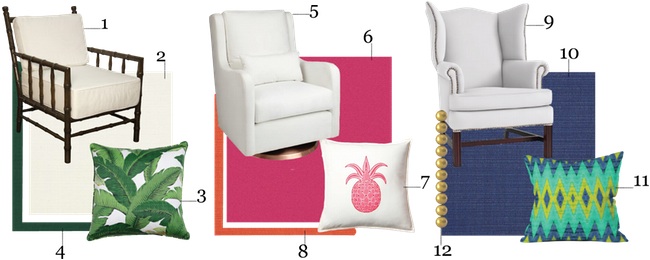
1. Bamboo Chair, a sure find at an estate sale | 2. Chair Upholstery Fabric in Sailcloth Salt | 3. Palm Beach Pillow | 4. Chair Piping in Canvas Forest Green | 5. Rocker/Glider – passed down from a first child or a friend’s nursery | 6. Chair Upholstery Fabric in Flagship Raspberry | 7. 20×20 Canvas Pineapple Pillow | 8. Chair Piping Fabric in Echo Sangria | 9. Wingback chair | 10. Chair Upholstery Fabric in Echo Midnight | 11. Ingrid Padilla Impress 2 Throw Pillow | 12. Brass Nailheads
P.S. Lead photo is of Salt Box on Harbour Island, Bahamas

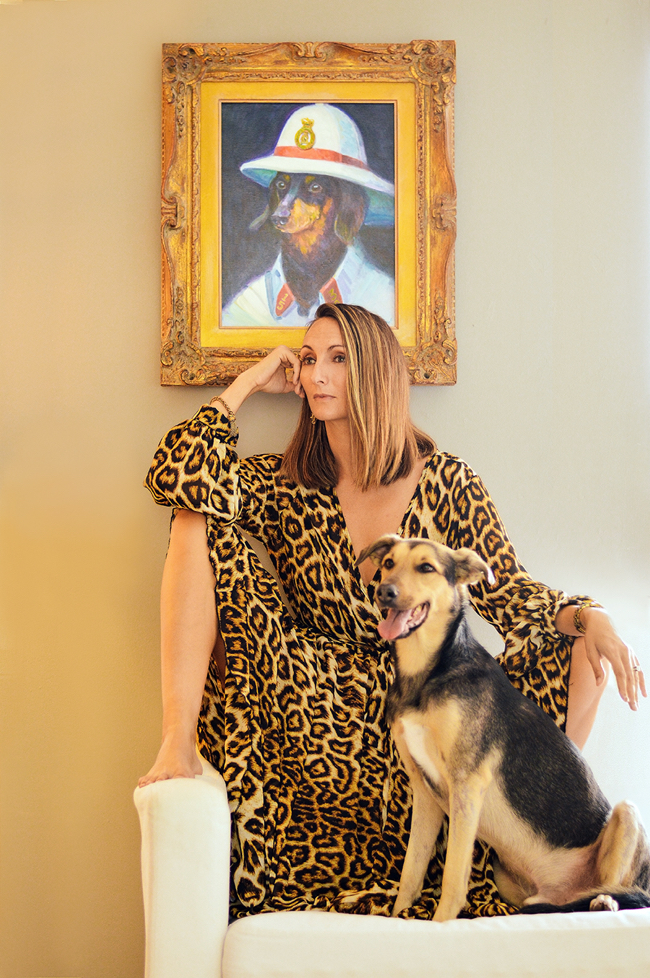
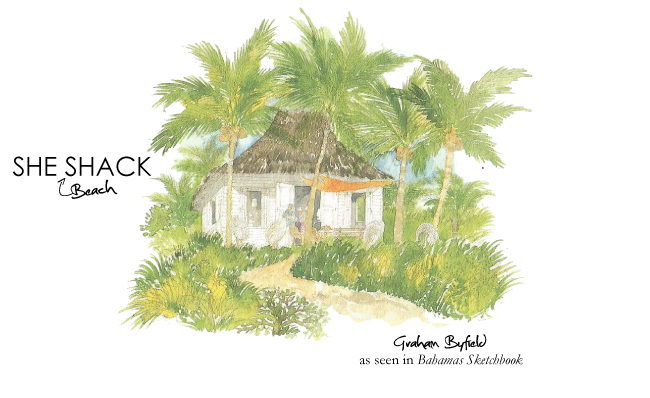
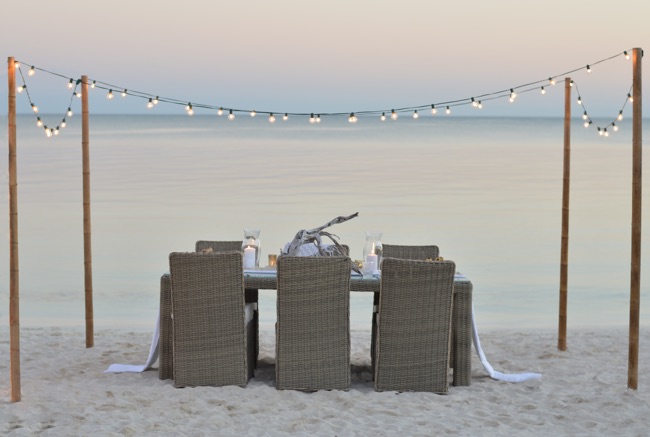

Join the conversation